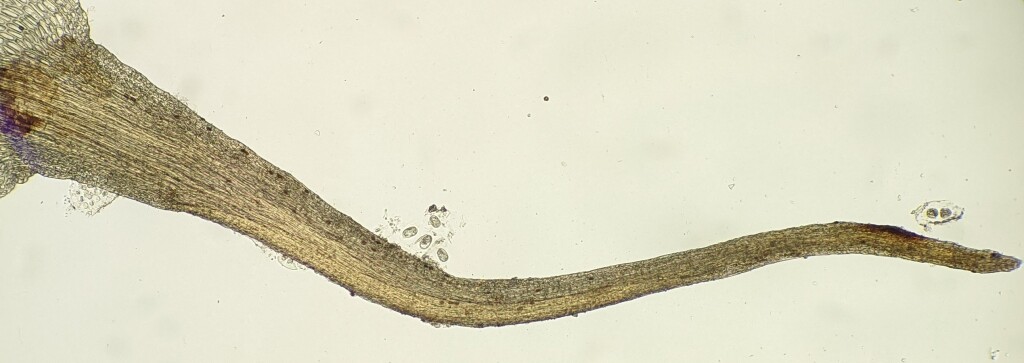Bruchiaceae
Autoicous, rhizautoicous, paroicous (not in Victoria), dioicous or rarely synoicous (not in Victoria). Asexual propagules absent. Minute or small plants, gregarious or in tufts on soil. Stem erect, simple or sparingly branched, sometimes by innovation, with rhizoids restricted to base; central strand present. Leaves arranged around stem and facing all directions, mostly lanceolate-subulate, rarely elliptic (not in Victoria), becoming larger toward stem apex, erect to erect-spreading when moist, scarcely altered, or contorted or crispate toward apex when dry, sheathing at base; apex rounded (not in Victoria), obtuse (not in Victoria), acuminate or subulate; costa single, subpercurrent to short-excurrent; margin entire or serrulate to denticulate toward apex, plane, without a distinct border; laminal cells subquadrate, irregularly hexagonal, rhomboid or rectangular, becoming longer and broader near base, becoming narrower near margins, smooth or abaxially prorate (not in Victoria); alar cells not differentiated. Acrocarpous. Perichaetial leaves larger than lower and differentiated from lower vegetative leaves. Capsule erect or inclined, straight or curved, immersed or exserted, operculate or cleistocarpous, with an elongated and highly stomatose neck, with or without an annulus. Calyptra cucullate or mitrate, smooth or papillose (not in Victoria), glabrous. Operculum conic-apiculate (not in Victoria) or rostrate. Peristome absent, reduced to a membrane or 16 simple, forked or perforate teeth in a single series.
On all continent except Antarctica, with five genera and 47 species; two genera and five species in Victoria.
The Bruchiaceae are well-characterised by capsules with an elongate and well-differentiated neck covered with numerous round stomata (Buck 1979).
 Spinning
SpinningBuck, W.R. (1979). A re-evaluation of the Bruchiaceae with the description of a new genus. Brittonia 31: 469–473.



